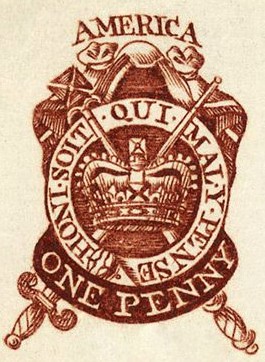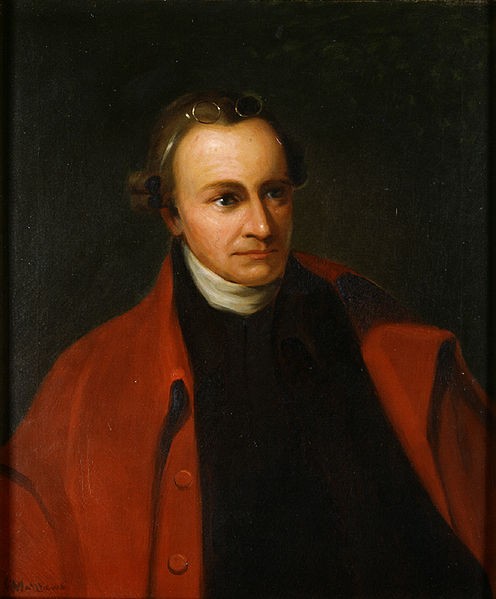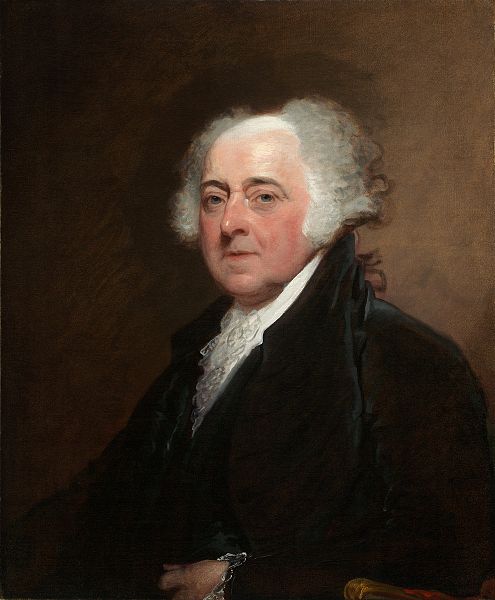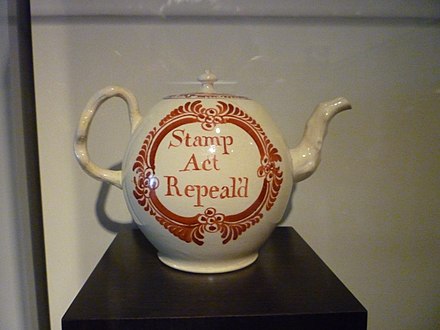Stamp Act is an important topic of American History that caused a series of other important events in American History that ultimately resulted in the American Revolution. It is a very important topic for history students. We have gathered a complete set of Stamp Acts Facts For Kids that will provide you with all the Stamp Act Information you need. You are going to learn All About The Stamp Act, its definition, description, dates, history, sugar & stamp acts, significance, summary, stamp act teapot, purpose, congress, significance, cause & effect, impact, riots, revolutionary war, outcome and many other interesting facts about the Stamp Acts.
Stamp Acts Facts For Kids
| Act Title | An act for granting and applying certain stamp duties, and other duties, in the British colonies and plantations in America, towards further defraying the expenses of defending, protecting, and securing the same; and for amending such parts of the several acts of parliament relating to the trade and revenues of the said colonies and plantations, like direct the manner of determining and recovering the penalties and forfeitures therein mentioned. |
| Territories where Applicable | British America and the British West Indies |
| Commencement Date | 1 November 1765 |
| Repealed Date | 18 March 1766 |
1. Define Stamp Act – Stamp Act Definition – Stamp Act Meaning
- Any legislation that requires tax on the legal recognition or transfer of certain documents is known as the Stamp Act.
- A document becomes legal when its owner pays tax and receives an official stamp on his document.

2. Describe The Stamp Act – Stamp Act Description
- Stamp acts have covered a wide variety of products such as patent medicines, cheques, contracts, marriage licenses, newspapers, and even play cards and dice.
- The tax levied under the stamp act is known as stamp duty.
- The approved government offices often physically stamped the documents after the payment of duty. However, buying adhesive stamps or annually paying a fixed sum are more common and practical methods.
- This taxation system was first planned in 1624 in the Netherlands.
- Later in 1765, the British Parliament directly levied an internal tax on the American colonists, which is known as the Stamp Act of 1765.
3. Stamp Act Date – Stamp Act Year – Date Of Stamp Act
- The Stamp Act of 1765 was the major of all the Stamp Acts.
- It was passed on the date of 22 March 1765.
- It was to be implemented on 1 November 1765.
- However, it was never implemented and was repealed on 18 March 1766.
Stamp Act End Date
- The Stamp Act of 1765 ended on 18 March 1766.
4. Stamp Act History
- The first Stamp Act was introduced in 1624 in the Netherlands when there was a need for a new form of taxation. This taxation system was devised after a public competition.
- Later in 1694, such a taxation system was introduced in England for the first time. The duty was taken on several legal documents, such as insurance policies, grants of probate, grants of honor, and administration letters. The tax range was between 1 penny to several shillings. The use of this taxation system was continued as it was proved very successful.
- On 1 August 1712, another Stamp Act was passed in the United Kingdom. It was a new tax devised on publishers, especially on newspaper publishers.
- In 1754, the French-Indian War started that financially influenced England. One year later in 1755, the Massachusetts Bay colony experimented with a Stamp Act.
- In 1763, France was defeated and the British gained control of territory in Eastern Canada and the 13 west colonies. The maintenance of control required more British troops and increased the financial burden on the crown.
- In 1764, the debt on England reached 130 million pounds while the English people were already taxed heavily. The Prime Minister at that time, Goerge Granvell, proposed the idea of imposing a stamp tax on the colonial residents for raising the revenue of the British crown.
- In 1765, the Stamp Act was passed in which the British Parliament imposed a direct tax on the colonies of British America.
- The colonial residents intensely opposed the Act, which was then repealed in 1766.
- However, the Declaratory Act was imposed in 1766 on the same day when the Stamp Act was repealed.
- The outcomes of the Stamp Act 1765 and the other acts imposed in the upcoming years disrupted colonists, and their efforts against the acts then led to the American Revolution.
Stamp Act 1712
- Stamp Act 1712, was passed on 1 August 1712 in the United Kingdom.
- It was a new tax on publishers, specifically on newspapers.
- The duty was one penny per the whole sheet of newspaper and one shilling per advertisement.
- According to this act, all the pamphlets, advertisements, commercial bills, legal documents, and other papers were required to be issued the tax.
Stamp Act 1763
- In 1763, no stamp act was passed.
- That year, the Seven Years’ War (1756 to 1763) ended and the British won a large number of New American territories.
- To maintain control of new territories, the British government needed funds. All the events that occurred in 1763 led to the British decision of imposing the Stamp Act of 1765.
Stamp Act 1764
- Two acts were passed in 1764:
The Sugar Act
- The Parliament of Great Britain passed this act on 5 April 1764.
- This act imposed a set of taxes on sugar and molasses that were imported into the new colonies.
- Foreign goods were also taxed through this act, such as wine, coffee, printed calico, and cambric.
The Currency Act of 1764
- This act was an extension of the Currency Act of 1751.
- Due to this act, the value of the paper money used in colonies declined.
5. Sugar And Stamp Act – Sugar Act And Stamp Act
- The Parliament of Great Britain passed the Sugar Act in 1764.
- This act is also known as the American Duties Act or the American Revenue Act.
- It was the amended form of the already existing Sugar and Molasses Act of 1733.
- In this act, the previous tax rate was reduced (from 6 pence to 3 pence per gallon of molasses) and the collection of tax was enforced to control the smuggling of sugar and molasses in the British American colonies.
- Several other products, such as animals’ skins and potash, were also added to the list of mentioned goods that could be exported legally under the Navigation Act 1651.
- The Sugar Act is also one of the incidents that increased the worries of colonists and helped in the development of the American Revolution.
6. Stamp Act 1765 – Stamp Tax 1765
- The Stamp Act of 1765 was passed by the British Parliament on 22 March 1765.
- This act imposed a direct tax on all the printed materials used for legal and commercial purposes in the British American colonies.
Stamp Act 1765 Definition – Define Stamp Act Of 1765
- Stamp Act 1765 was an act the British Parliament passed in 1765.
- This act imposed a direct tax on the British American Colonies and required all the commercial and legal printed materials to be produced on stamped paper imported from London, having an embossed duty stamp.
Stamp Act 1765 Significance
- The outcomes of the Stamp Act 1765 were significant.
- This act created resistance in all the colonies and led them to organize in opposition groups.
- Merchants organized and decided against boycotting British goods.
- An inter-colonial organization, the Sons of Liberty, made the activities of coordination and communion between colonies easier.
- The overall situation led to the American Revolution. The repeal of the Stamp Act on 18 March 1766 was considered a victory for the cause of independent America.
Stamp Act 1765 Summary – Stamp Act Summary – Stamp Act Short Summary –
- The Stamp Act of 1765 was an act passed by the British Parliament on 22 March 1765.
- This act levied a direct tax on all the printed materials of legal and commercial use in the British American colonies.
- From pamphlets and newspapers to dice and play cards, all the printed materials were required to have an embossed duty stamp.
- The duty or tax was required to be in the British currency rather than colonial money.
- The colonists, who were recently taxed with; the Sugar Act (1764), the Currency Act (1764), and the Quartering Act (1765), got angered and started protests against the act.
- When the British government realized that the cost of enforcing the Stamp Act is much more than its abolishment, the act was decided to be repealed.
Stamp Act 1765 Facts
- In 1763, the Seven Years War (the French and Indian War) ended in which Great Britain got victory over France.
- The British government levied the Stamp Act of 1765 on the American colonies to raise funds needed to maintain military troops in the colonies.
- The act required all the printed materials in the colonies to be created on a special paper imported from England having an embossed duty stamp.
- The tax was to be paid in the British hard currency, not in colonial paper money.
- The attorney licenses had the highest tax of £10.
- The highest duties on the college students and lawyers were planned to restrict the growth of the professional class in the colonies.
- Because of intense opposition and protests in the streets, the Stamp Act 1765 was never implemented and repealed in 1766.
7. Stamp Act Tax – The Stamp Act Was A Tax On- The Stamp Act Taxed Colonists On
- The Stamp Act tax was on many printed materials, such as:
- Legal documents
- Newspapers
- Magazines
- Play cards
- Many types of other papers were used all over the British American colonies
- The tax range was from one penny to several shillings.
- The highest tax was £10 on the attorney licenses.
8. Stamp Act Purpose – The Primary Purpose Of The Stamp Act Was To – Reason For Stamp Act
- The primary purpose of the Stamp Act was to raise funds for the British military troops stationed in America after the French and Indian War.
9. Stamp Act Congress Facts
- The Stamp Act Congress was a meeting of representatives from several British colonies in North America.
- It was the first meeting of the elected representatives and was held in New York from 7 to 25 October 1765.
- They gathered in the building now known as the Federal Hall to plan a united protest against the new British taxation.
- Delegates from nine of the eighteen British colonies in North America attended the congress.
- They discussed the Stamp Act 1765 and unified against it.
- The congress issued a Declaration of Rights and Grievances and claimed that the British Parliament has no right to levy the tax because the British Parliament has no representatives from colonies.
- Six members of the nine delegations signed petitions, in which the provisions of the act were objected and sent to the Parliament and King George Ⅲ.
10. Stamp Act Significance – Stamp Act Importance – The Importance Of The Stamp Act
- The Stamp Act of 1765 has a great significance in American history because it put a pathway to the American Revolution.
- The British Parliament levied Stamp Act to maintain military troops on the colonial borders.
- The British felt that they are justified in imposing the tax as the colonists get the benefit of the troops.
- However, the colonists did not feel the same and their resistance led to the American Revolutionary War in 1775.
11. Stamp Act Stamp

12. Stamp Act Cause And Effect – The Stamp Act Of 1765 Affected
- The British government imposed the Stamp Act for the cause of raising funds to maintain military troops on the colonial borders after the French and Indian War.
- The effect of the Stamp Act was immediate outrage in the colonies and protests against the act.
13. Stamp Act Impact – Stamp Act Consequences
- The activities of the Sons of Liberty and merchants in the form of organized opposition against the Stamp Act 1765 provided a kind of practice for opposing the upcoming 1767 Townshend Acts.
- The Stamp Act Congress was a forerunner to the Continental Congress, and especially to the Second Continental Congress which superintended the establishment of American independence.
- The Stamp Act became a key element in starting the American Revolution.
14. The Stamp Act Of 1765 Angered Colonists Because
- The Stamp Act of 1765 angered the colonists because they thought the British Parliament had no right to tax them.
- There were no representatives in the British Parliament from the colonies.
- The colonists believed that their legislature should be the only people that would have the right to tax them.
15. Stamp Act Riots – Stamp Act Protests – Stamp Act Boycott – Stamp Act Rebellion – The Boycott Movement Against The Stamp Act
- When the Stamp Act was passed in 1765, the colonists intensely opposed it and started organized protests.
- In Boston, the Sons of Liberty hung and burned an effigy of the colony’s stamp distributor, Andrew Oliver.
- The headquarters of the Stamp Act were destroyed and the houses of customs officials were attacked including Lieutenant Governor Thomas Hutchinson.
- The protestors raised the slogan of “No Taxation Without Representation”.
- In Boston, New York, and Philadelphia, the merchants unified to boycott the British imports while the colonists were called for the boycott of the British goods.
- In some colonies, the angry mobs enforced the resignations of the British appointed officials.
- At the seaports, the riots broke out and ships carrying stamp papers from Britain were turned away.
- The riots against the Stamp Act continued for about one year until its repeal in 1766.
16. Declaratory Act Of 1766 – Stamp Act 1766
- In 1766, an act known as the Declaratory Act was passed by the British Parliament.
- It was passed on the same day as the repeal of the Stamp Act 1765.
- In this act, the British government asserted that it had free and whole legislative power over the American colonies.
17. Stamp And Quartering Act
- Quartering Act is a common name of several acts passed by the British Parliament.
- The first quartering Act was passed on 3 May 1765.
- These acts were the amendments of the American Mutiny Act.
- According to all the quartering acts, the colonial assemblies were required to provide accommodation, food, and drink to the British troops.
- These acts created tensions between the British government and the Thirteen Colonies, which then led to the American Revolution.
18. Townshend Act 1767
- The British Parliament passed a series of laws in 1767 known as the Townshend Acts.
- These laws imposed new taxes on the colonists and took away some of their freedoms.
- According to these acts:
- New taxes were levied on the import of paper, paint, glass, lead, and tea.
- The American Customs Board was established in Boston for tax collection.
- New courts were set up in America to take legal action against smugglers without a local jury.
- British officials were authorized to search the houses and businesses of the colonists.
19. Revenue Stamp Act
- The Revenue Act was the 2nd of the five Townshend Acts.
- Passed on 6 June 1767, the Revenue Act imposed duties on glass, lead, paper, and colors used by the painters.
- In the form of “writs of assistance” (general warrants that could be used to search someone’s property for smuggled commodities), the act gave a wide authority to customs officials to enforce duties and punish smugglers.
- The use of the writs of assistance was controversial and increased anger in the colonists.
20. The Intolerable Acts
- After the Boston Tea Party in December 1773, the British Parliament passed five punitive laws in 1774, which are known as the intolerable acts.
- These laws were known as the Coercive Acts in Great Britain.
- The major purpose of these laws was to punish the Massachusetts colonists for their open resistance to the Tea Party protest.
- These laws took away the historic rights and self-governing of the Massachusetts colony.
- These laws triggered resistance and outrage in the Thirteen Colonies and became the key elements in the outbreak of the American Revolution in 1775.
21. Stamp Act Revolutionary War
- The Stamp Act 1765 caused the development of constitutional and political differences and pressurized Great Britain’s relationship with its American colonies.
- The American patriots started protests against taxation without representation and boycotted British goods.
- The protest reached its peak point at the Boston Tea Party when the Sons of Liberty destroyed a British shipment of tea at Boston Harbor in 1773.
- In response, Great Britain closed the Boston Harbor and passed a series of punitive acts (Intolerable Acts) against the Massachusetts Bay colony in 1774.
- The Massachusetts colonists intensely responded and declared the Suffolk Resolves, in which the Massachusetts Government Act was rejected and the boycott of British goods was resolved.
- Other American colonies except Georgia unified and formed the Continental Congress for coordinated resistance.
- On 19 April 1775, Britain attempted to disarm the Massachusetts militia in Concord. It led to open combat and became the first military engagement of the American Revolutionary War.
- In such a way, the Stamp Act of 1765 led to the American Revolutionary War.
22. Sons Of Liberty Stamp Act
- The Sons of Liberty was a confidential revolutionary organization in the Thirteen British Colonies.
- It was created to promote the rights of the European colonists and to fight the taxes the British government imposed on the colonies.
- In most colonies, the Sons of Liberty played a key role in fighting against the Stamp Act of 1765.
23. Patrick Henry And Stamp Act
- Patrick Henry was a lawyer and politician from Virginia.
- He introduced a series of resolutions to the Virginia legislature in response to Stamp Act 1765.
- The Virginia legislature adopted his resolutions known as the Virginia Resolves that were soon published in other colonies.
- The resolutions declared that according to British law, only Virginia’s own elected representatives have the right to impose internal taxes on Virginians.
- The speeches and resolutions of Patrick Henry helped the American position to be effective against taxation without representation.

24. John Adams Stamp Act
- John Adams was a statesman, diplomat, lawyer, and writer from Massachusetts.
- He arose as a prominent leader during the widespread opposition to the Stamp Act of 1765.
- In opposition to the Stamp Act, John Adams wrote articles with his pen name “Humphrey Ploughjogger”, including the four articles published in the Boston Gazette newspaper.
- In 1768, his articles were republished in The London Chronicle with the title ‘The True Sentiments of America’.
- Later, he was a delegate to the Continental Congress from Massachusetts.
- He is one of the Founding Fathers of the United States who also served as the 2nd President of the United States.

25. Benjamin Franklin Stamp Act
- Benjamin Franklin was a printer, leading writer, and politician from Philadelphia, Pennsylvania.
- Initially, he supported the Stamp Act of 1765. However, he became an opponent when he knew about the intense resistance of the colonists against the act.
- He lobbied in London for the repeal of the Stamp Act.
- He played a major role in the American Revolution and was one of the Founding Fathers of the United States.

26. Samuel Adams Stamp Act
- Samuel Adams was a statesman and politician from the Massachusetts colony.
- He is one of the eight Founding Fathers of the United States.
- When the Stamp Act was passed, Samuel Adams argued that it is unconstitutional.
- He supported the boycott calls of British goods.
- Samuel Adams was one of the first colonial leaders who argued that there are certain natural rights of mankind that any type of government could not violate.
- He played a vital role in the unification of all American colonies during the American Revolutionary War in the fight for independence.
27. George Grenville Stamp Act
- George Grenville was a British statesman and the Prime Minister of Great Britain from 16 April 1763 to 10 July 1765.
- He was the originator of the Stamp Act of 1765.
- He proposed the idea of imposing a stamp tax on the colonies to raise funds needed for maintaining British troops in America.
28. Andrew Oliver Stamp Act
- Andrew Oliver was a provincial official and merchant from the Massachusetts Bay colony.
- He is well-known for his responsibility of executing the provisions of the Stamp Act 1765.
- However, the protesters hanged and burned his effigy and destroyed his house.
- He never did that duty and was later commissioned as the lieutenant governor of the province.
29. No Taxation Without Representation Stamp Act
- “No Taxation Without Representation” was the slogan the protesters raised while they were protesting against the Stamp Act 1765.
- As there were no representatives from the American colonies in the British Parliament, the colonists believed that the British government had no right to impose direct taxes on the colonies.
30. Result Of Stamp Act – Stamp Act Outcome
- The outcome of the Stamp Act 1765 was the American Revolution and the independence of America from Great Britain.
31. No Stamp Act Teapot – Stamp Act Teapot
- No stamp act teapots were made in England from about 1766 to 1770.
- The Cockpit Hill Factory, Derby, was the possible creator of this teapot.
- On one side of the teapot was inscribed “No Stamp Act” and on the other side “American Liberty Restored”.
- Such teapots were made for sale in the market of American colonies after the repeal of the Stamp Act 1765.

32. Other Stamp Acts
Stamp Act 1775
- No stamp act was passed in 1775.
- The American Revolutionary War started in April 1775.
Stamp Act 1891
- The Stamp Act 1891 was passed in the United Kingdom.
- This act still constitutes much of the United Kingdom’s operative law on stamp duties along with the Stamp Duties Management Act 1891.
- According to this act, stamp duty was imposed on a whole variety of items besides paper-based items.
- The 1891 Stamp Act was an inspiration for a lot of older stamp duty acts in Australia.
Stamp Act 1899 – Stamp Duty Act 1899 – The Stamp Act 1899
- The British Indian government levied the Stamp Act 1899.
- In this act, stamp duty was charged on the instruments for transaction recordings, and amendments were made to the stamp-related laws.
- After independence, Pakistan made this act applicable to define and regulate the instruments which are chargeable with tax.
Stamp Duties Act 1920
- The Stamp Duties Act 1920 was passed in New South Wales, Australia.
- Along with the Land Tax Act 1956 and the Payroll Tax Act 2007, the Stamp Duties Act 1920 is the major state’s taxation law.
Stamp Duties Act 1923
- The Stamp Duties Act 1923 was enacted in 1923 in South Australia.
- This act was then amended almost every year.
- Its current version is of 2017, after which it is not still amended.
Stamp Act 1949 – Stamp Duty Act 1949
- The Stamp Act 1949 is a statutory law in Malaysia sanctioned for the collection and evaluation of stamp duties.
- This law imposed stamp duties on certain legal, commercial, and financial instruments.
Stamps Act 1958
- The Bombay Stamp Act 1958 was enacted in 1958 and is applicable in the Maharashtra state of India.
- This act levies stamp tax on certain types of instruments or documents by which any liability is or claimed to be created, recorded, distinguished, extended, or transferred.
- There is no stamp duty on the transactions according to this act.
Food Stamp Act Of 1964
- The Food Stamp Act of 1964 was signed in 1964 by US President Lyndon B. Johnson.
- The main purposes of this act were:
- Strengthening of the agriculture economy
- Helping to attain a full and effective usage of food abundances
- Providing a better level of nutrition to low-income householders
33. Stamp Act Quizlet – Stamp Act Of 1765 Quizlet
34. Fun Facts About The Stamp Act – Interesting Facts About The Stamp Act
- The British government imposed the Stamp Act of 1765 on the British American colonies to raise funds and maintain troops in the territories won in the Seven Years’ War.
- The duty was to be paid in the British currency, not in the colonial paper money.
- The British Parliament believed that the tax was fair and was not intended to oppress the colonies.
- The tax imposed on the colonies was not too expensive. However, the colonists believed that it would open the doors of more taxation if they did not oppose it.
- One in every three colonists was Loyalist and wanted to remain under the rule of Britain. The Loyalists had not supported the American Revolution.









